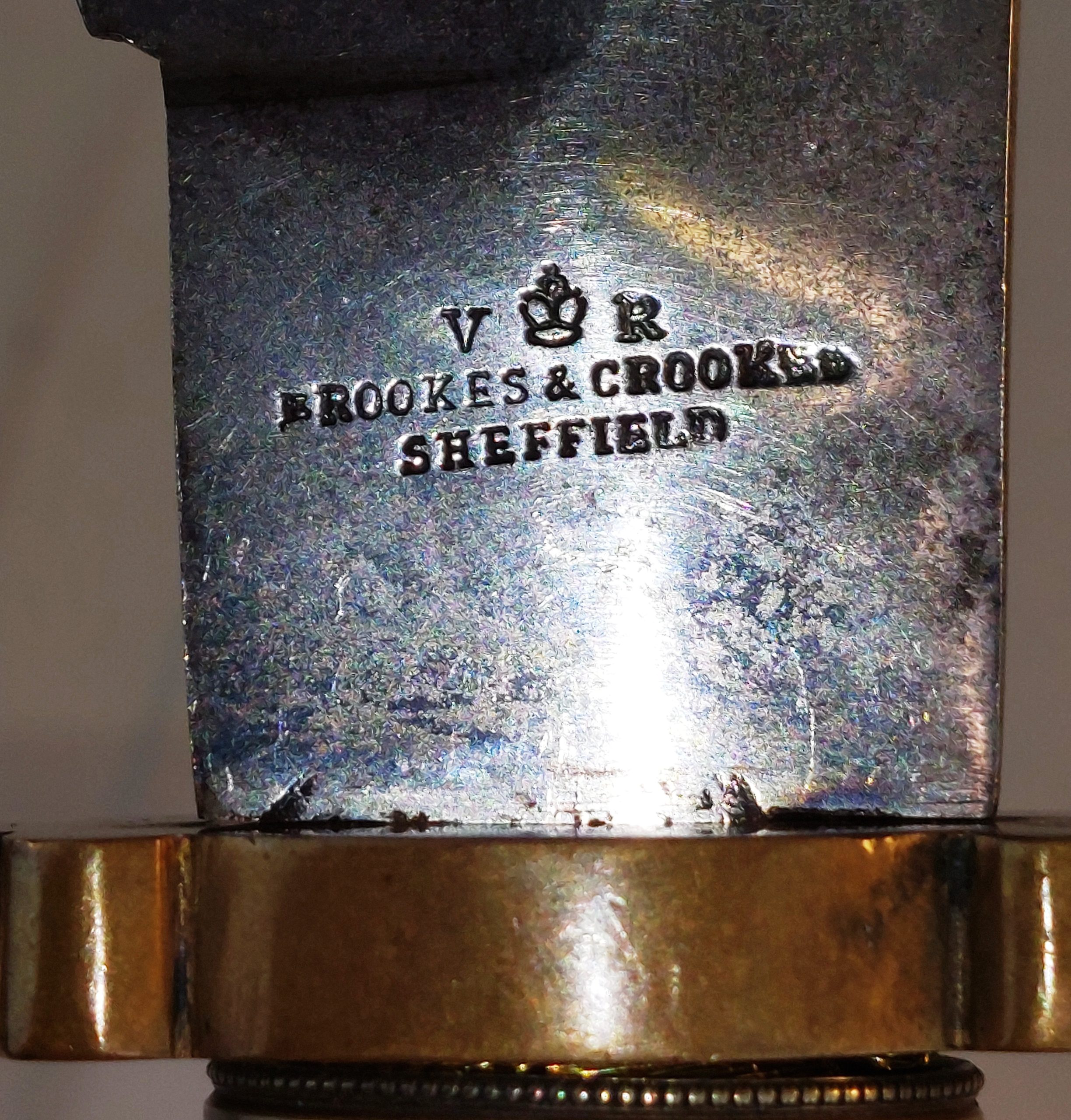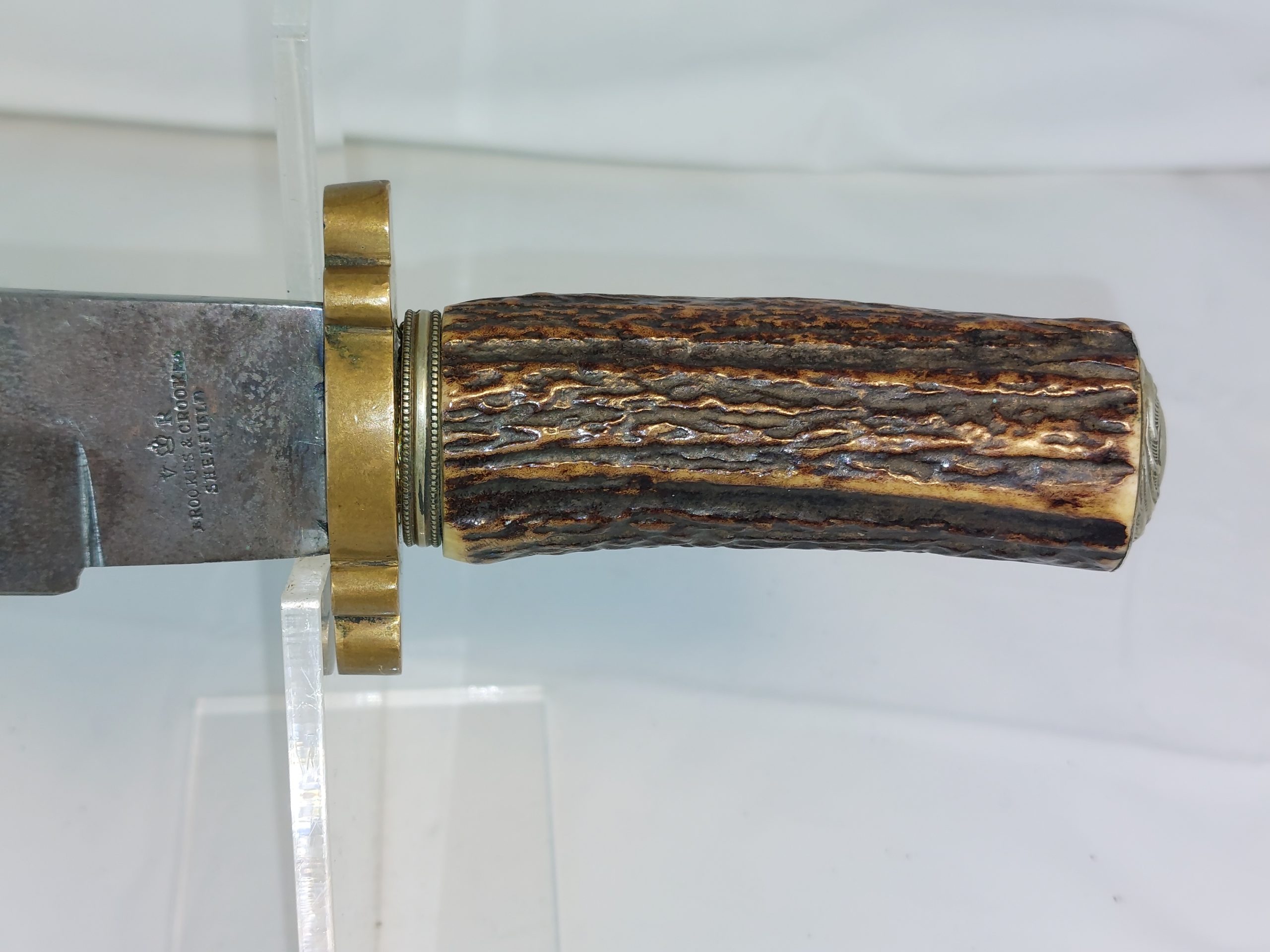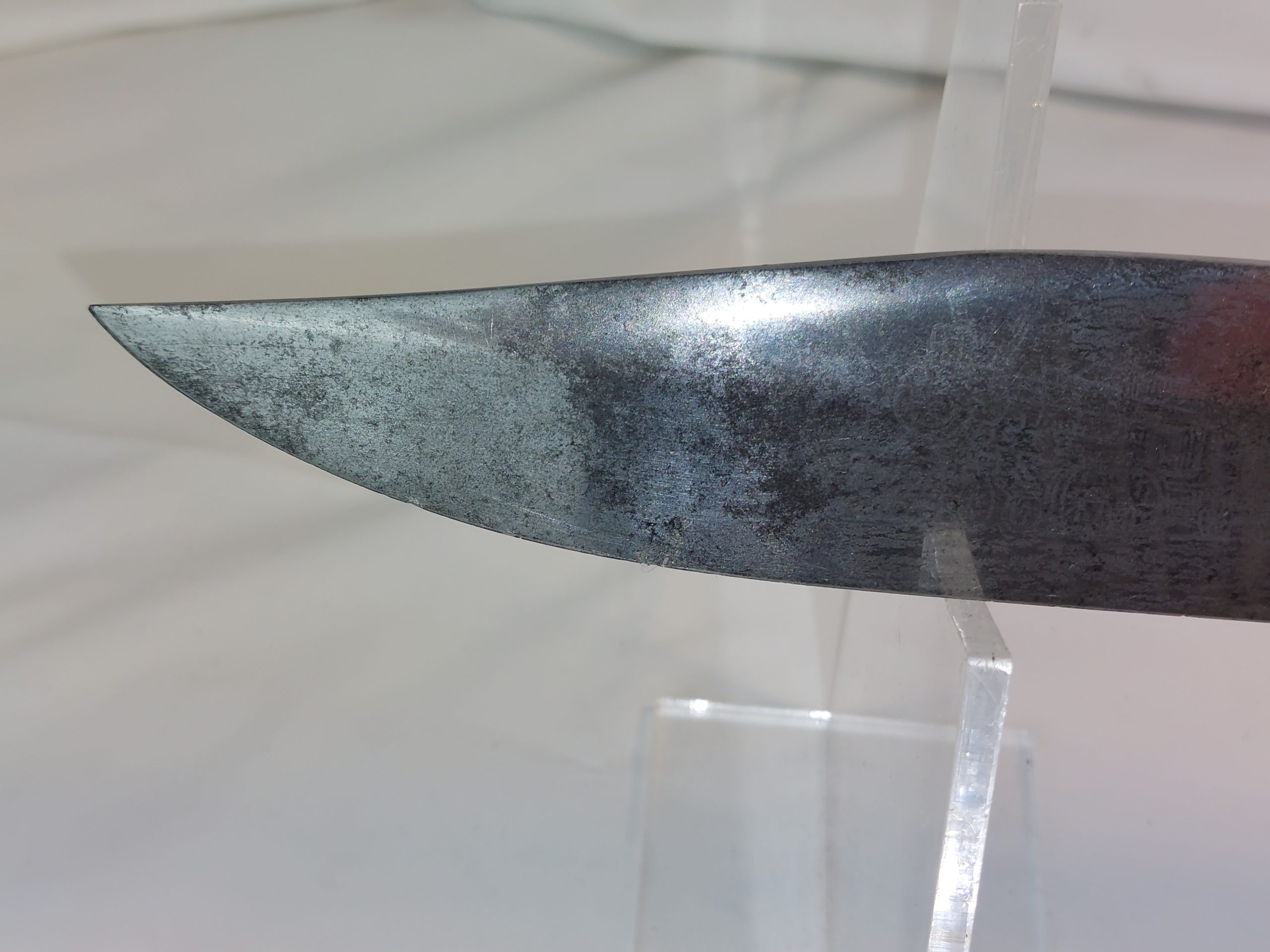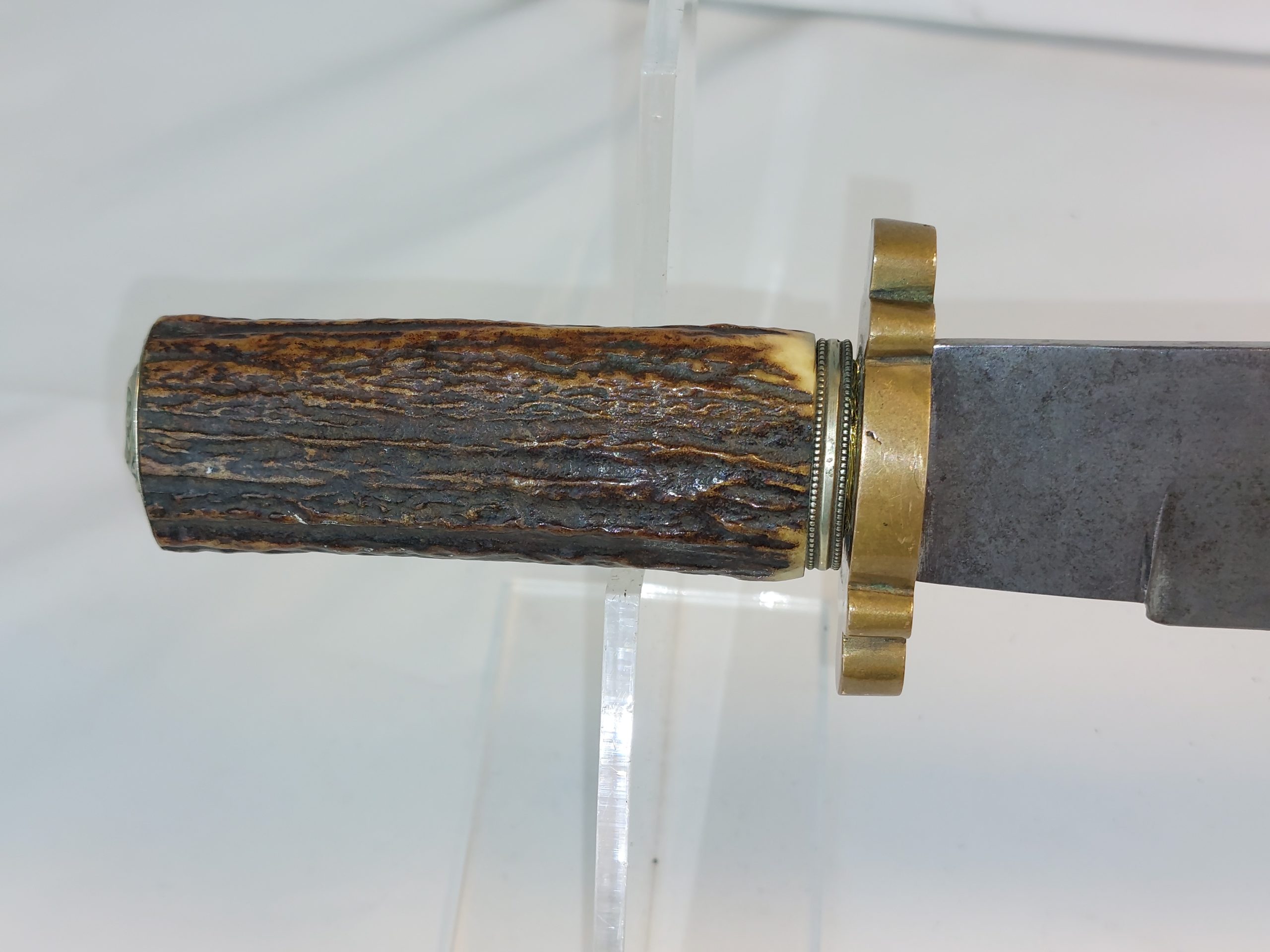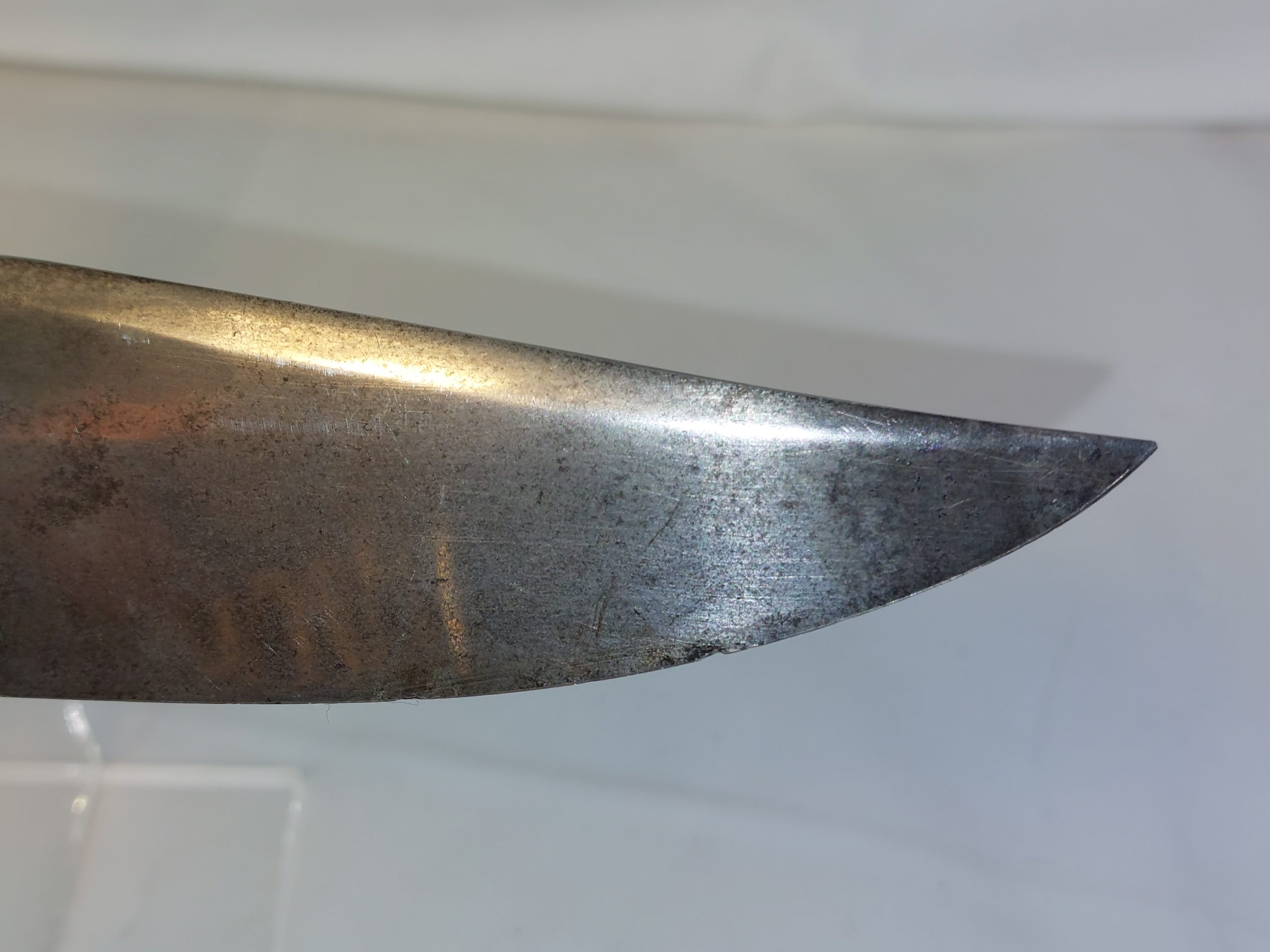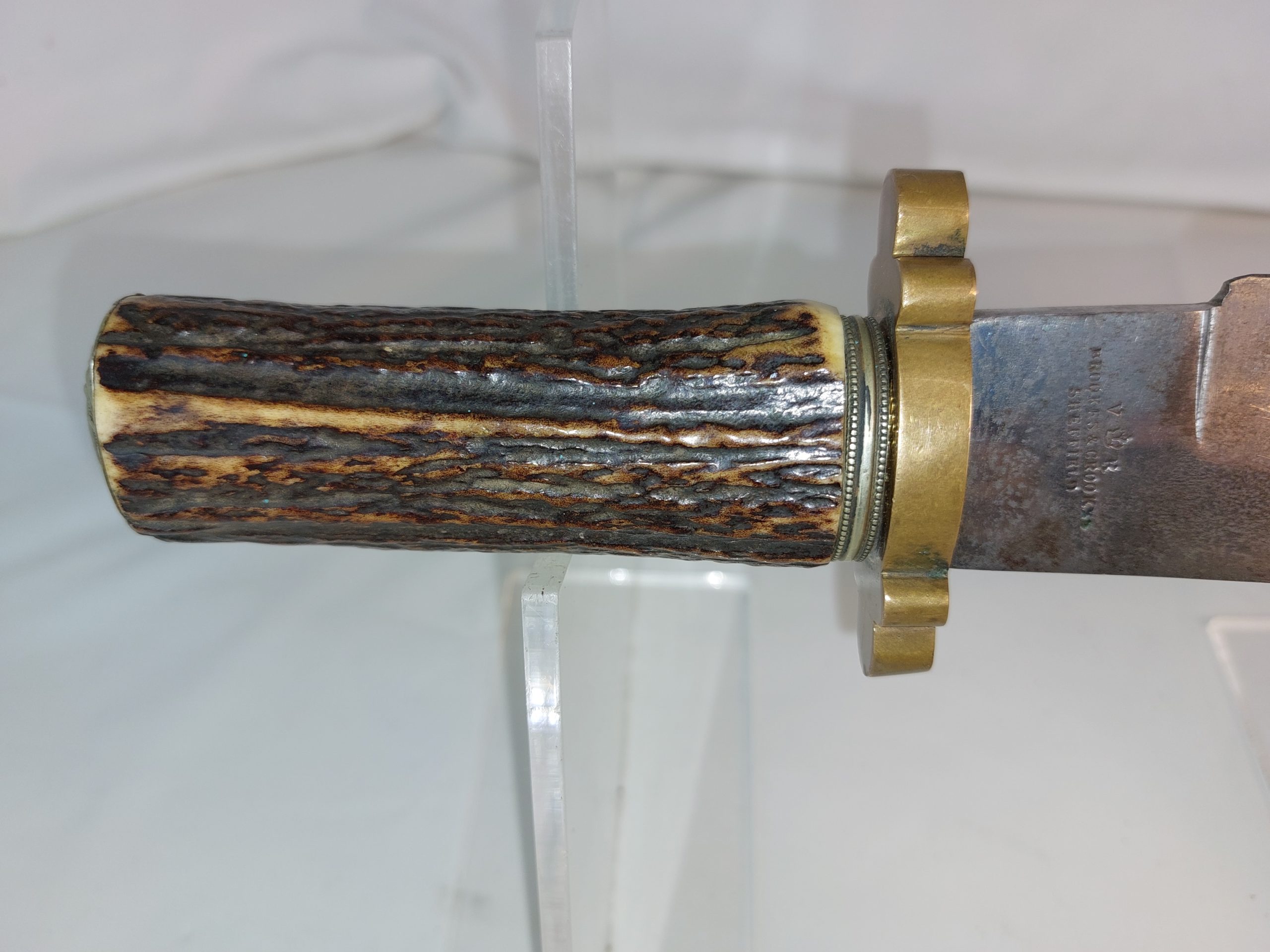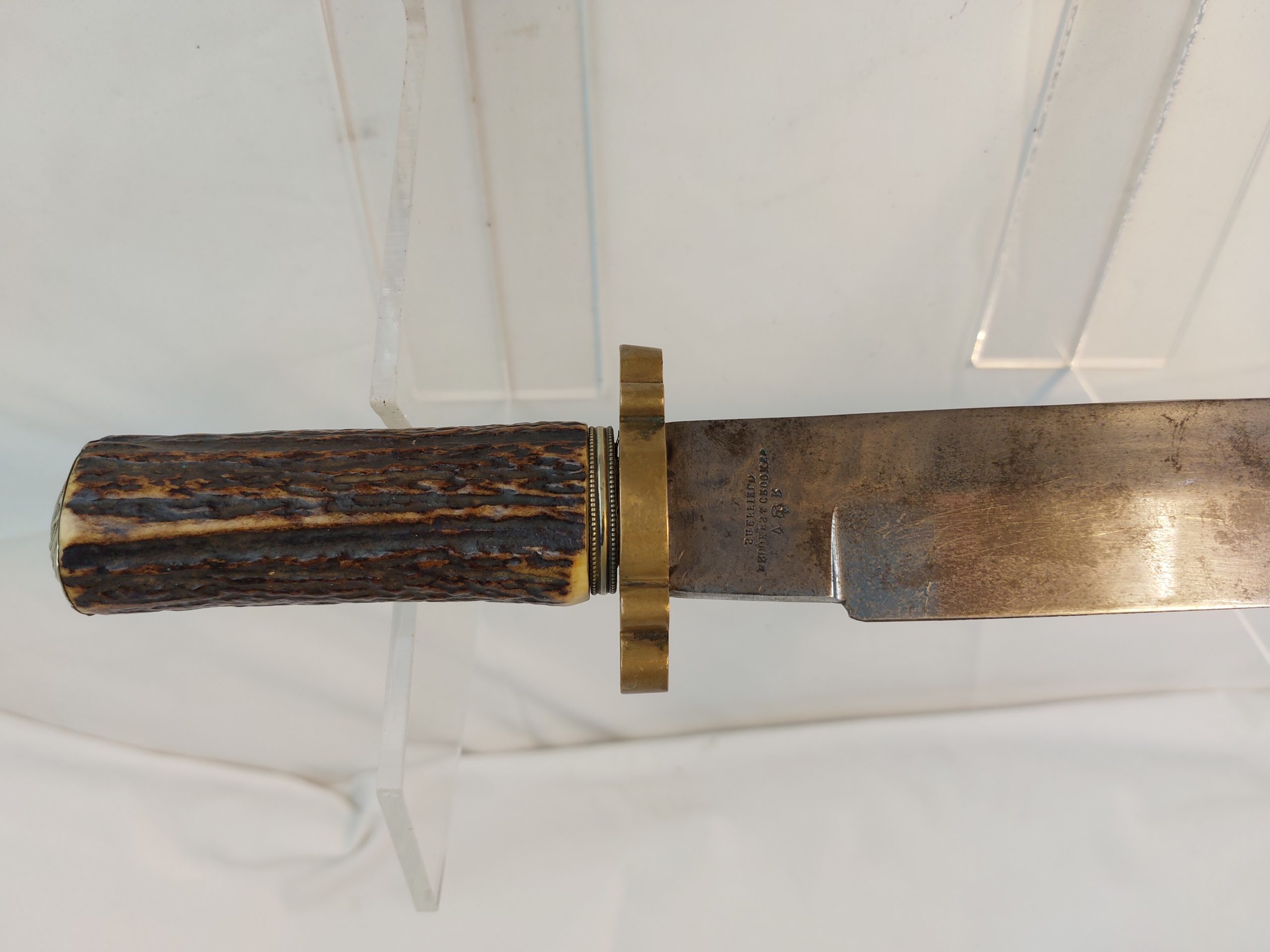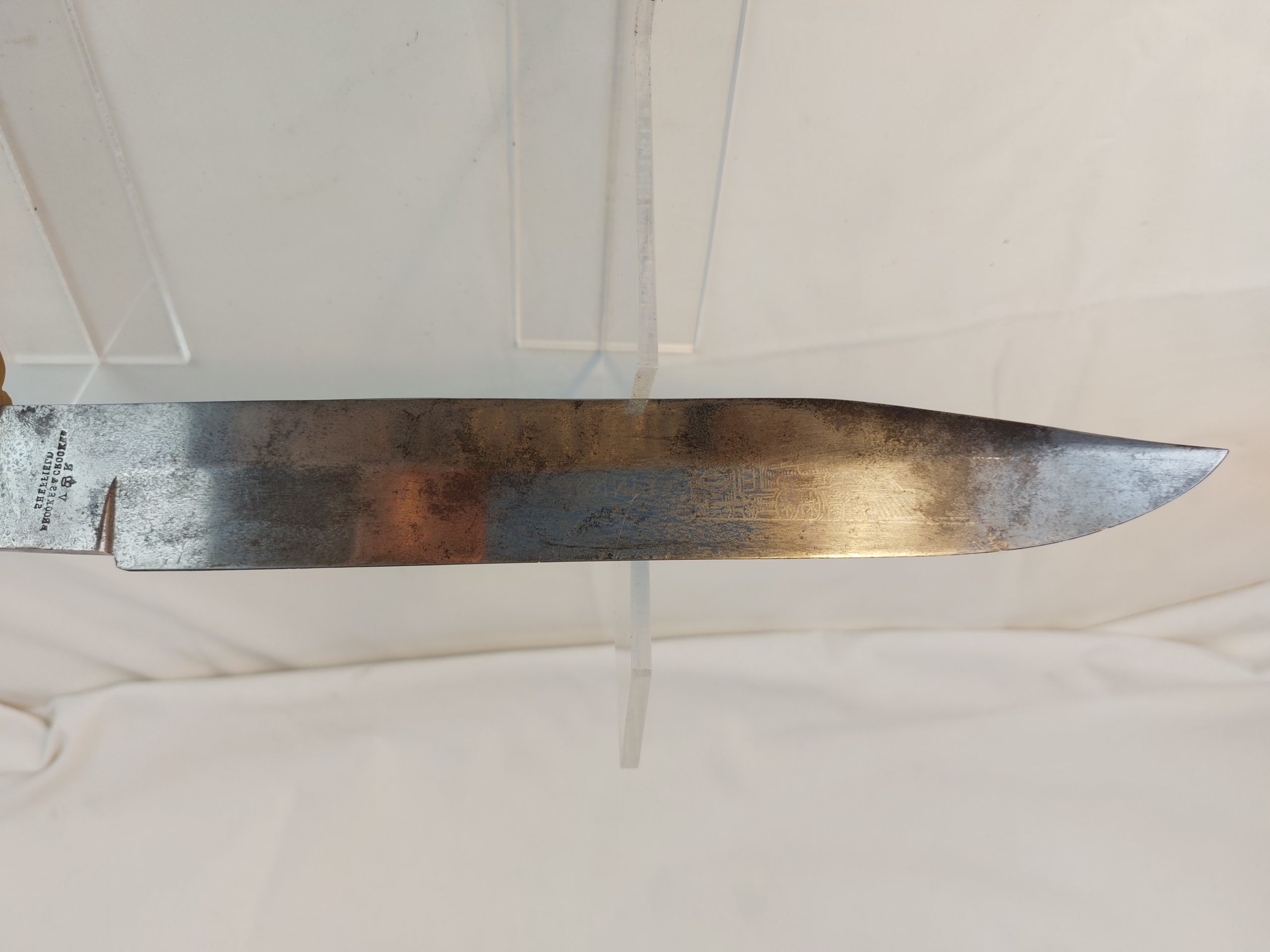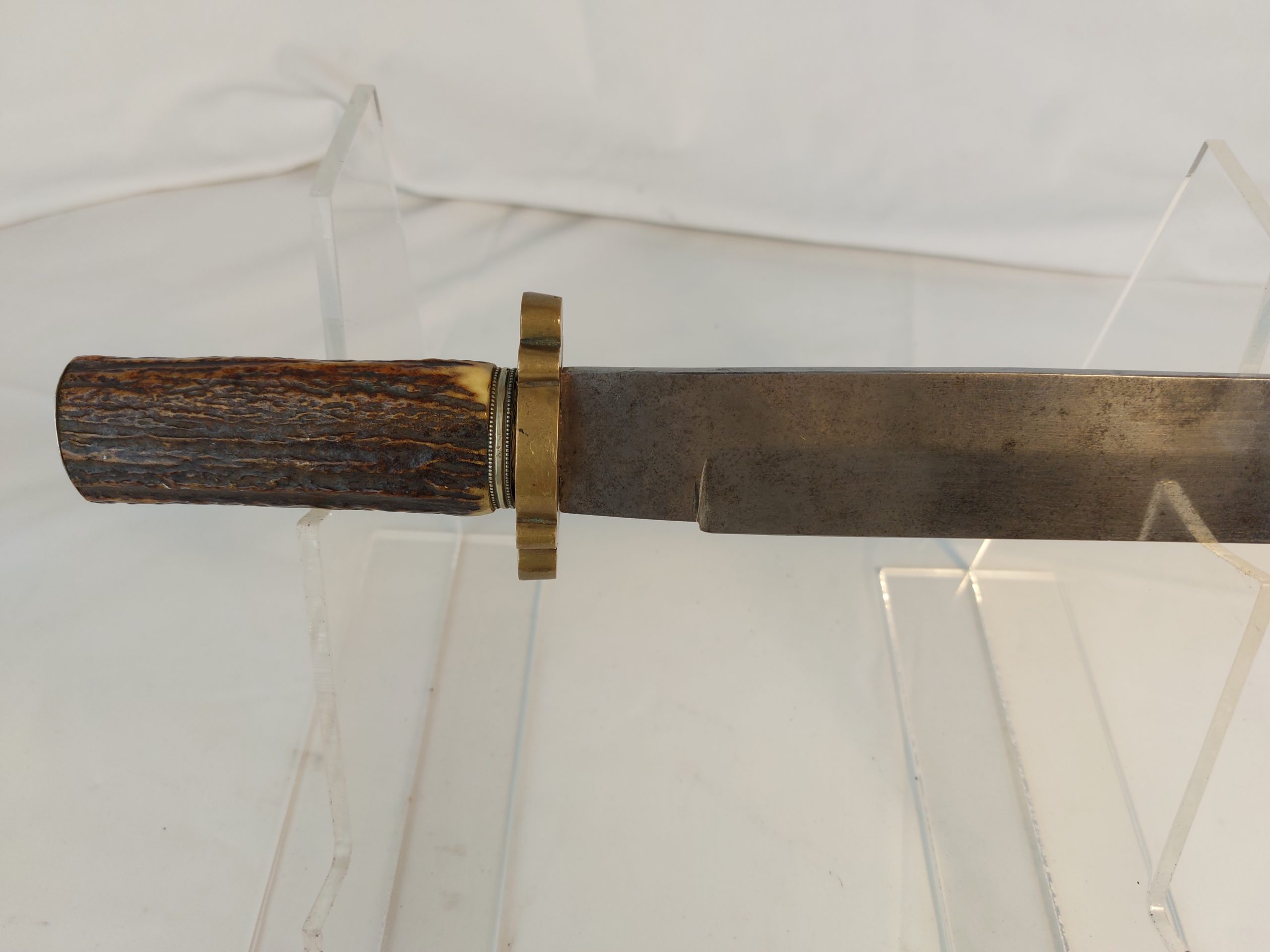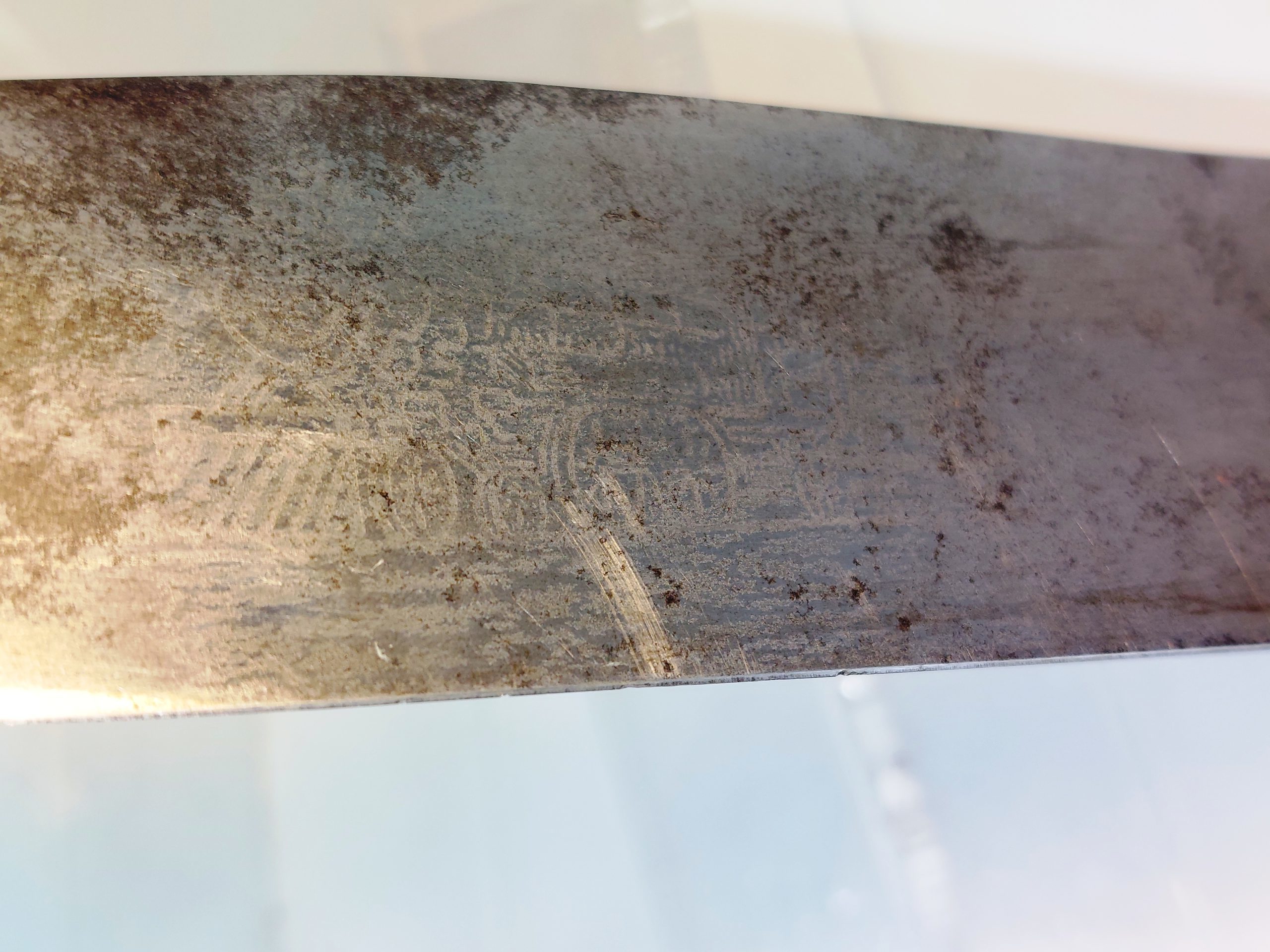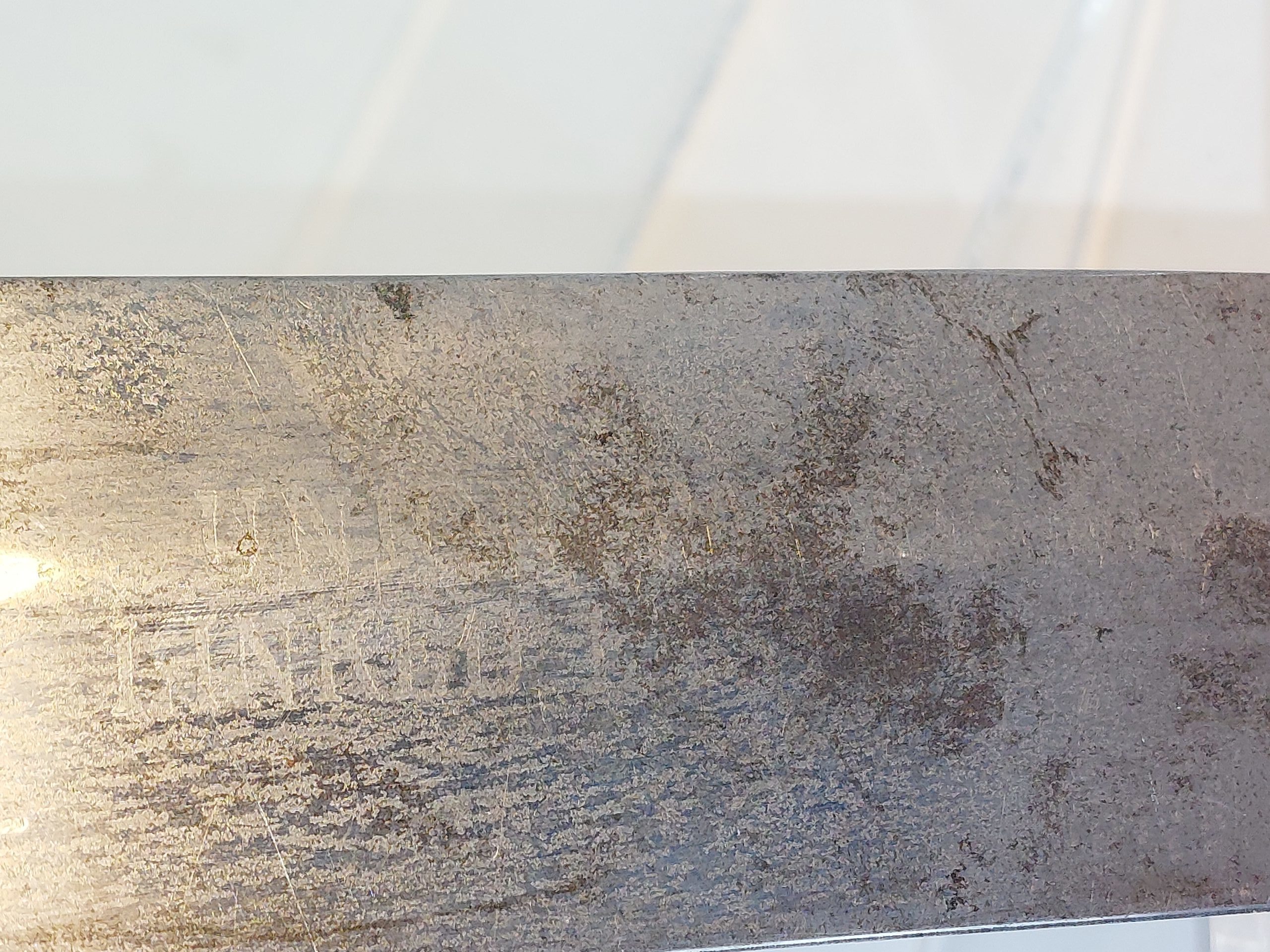*Brooks & Crookes Victorian Bowie Knife c1863. Engraved with a Steam Train ‘Union Pacific Railway, Linked East to West’. *
A rare early Brooks & Crookes Victorian Bowie Knife with a 315mm spear point blade (430mm total), the ricasso stamped with Queen Victoria’s cypher and ‘V”R’ and the makers ‘Brookes & Crookes, Makers, Sheffield’. It has a brass crossguard and pommel, with a bone or bone effect grip.
This knife represents a unique moment in rail history as it is faintly engraved with a steam train and the words ‘Union Pacific Railway, Linked East to West’. The use of word railway being particularly British as it was called the Railroad in America. This was likely to have been a gift for an American celebrating the founding, in 1862, of the Union Pacific Rail Road. The original company, the “Union Pacific Rail Road”, incorporated on July 1, 1862, under the Pacific Railroad Act of 1862 approved by President Abraham Lincoln which authorized railroad construction from the Missouri river to the Pacific to ensure the stability of the Union throughout the American Civil War. The resulting track ran westward from Iowa to meet in Utah the Central Railroad line, which had been constructed eastward from Sacremento, California. The combined Union Pacific–Central Pacific line became known as the First Transcontinental Railroad. The engraved train shows a cow catcher at the front and a flared funnel, characteristic of early American steam trains.
The wonderfully named Brookes & Crookes was launched by 1851 John Brookes (1825-1865). At the Great Exhibition (1851), he displayed ‘articles suitable for ladies’ work-boxes and gentleman’s dressing cases, made in steel, ivory and pearl; button hooks, nail files, tweezers, corkscrews and stilettos’. He received an Honourable Mention from the Exhibition jurors. In 1858, John Brookes was joined by Thomas Crookes (1826-1912). They acquired a warehouse, workshops, engine-house, and grinding wheel behind a house at 58 St Philip’s Road. In the summer of 1858, the partners entertained their workmen and their invited friends to a day of cricketing and toasting at The Plough Inn, Sandygate. Brookes underlined the partners’ intention to produce first-class goods, while Crookes promised a just remuneration for labour. These were common sentiments but had some substance: Brookes and Crookes were already known for paying bonuses for new designs (Sheffield Independent, 19 June 1858). In 1859, Brookes & Crookes appeared in Melville’s Commercial Directory of Sheffield as ‘manufacturers of spring knives and dressing case instruments’. John Brookes told the Census in 1861 that the factory employed about 50 men. Brookes died at West Riding Pauper Lunatic Asylum, near Wakefield, on 14 February 1865. He was aged only 39 and had died from apoplexy and ‘chronic disease of the brain’. The company registered their ‘Bell’ mark – in 1864, suggesting that this knife was made before this between 1858-64, the steam train engraving puts the date closer to 1862-4. Brooks & Crooks most famous invention was the ‘Stanley Knife’.
*Condition*
The blade is is good condition with some tarnishing and a few minor nicks to the blade. The engraving of the makers mark and Royal cypher is clear. The engraving of the steam train and accompanying lettering is harder to read. Please see photographs as part of the condition report.
RQMFOOX100_3795120341



